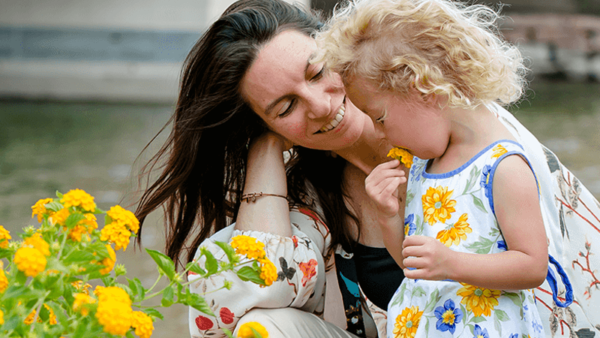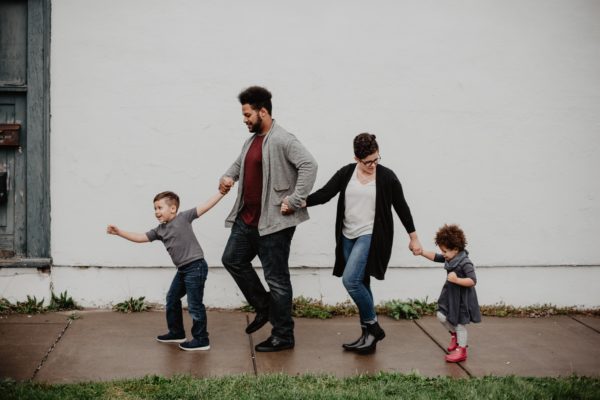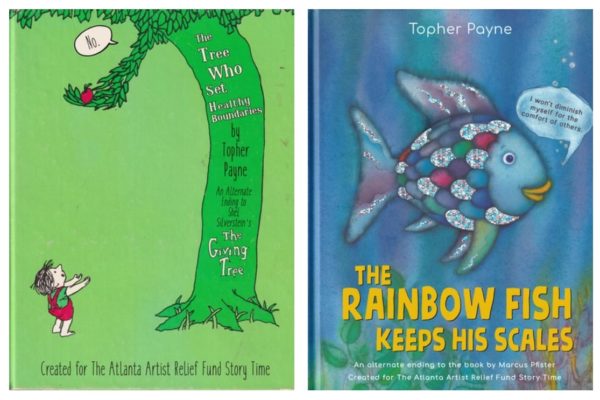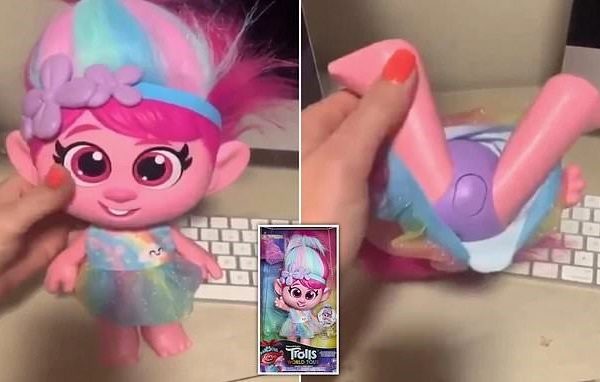As September is Consent month, let’s think about all the ways consent and parenting knock heads.
Frankly, a whole swath of topics involve coercion and threats more than they do teaching and guiding…and the last thing we want to be passing on to our kids is coercion strategies.
At the same time, we can’t be neglectful by not brushing teeth or insisting on seatbelts.
Here are some places where consent and daily life don’t always get along and my top suggestions for smoothing the road when it comes to Food, Safety, and Hygiene.
Consent and food
This is a biggie. Many of us were bought up in households that didn’t treat the mouth as a sacred private part and that didn’t honor one’s internal compass around food.
Why? There are so many meanings we assign to food. Some families feel that eating the food served to you is a sign of love, an acknowledgement of the care that went into cooking the meal. Some see cleaning your plate as a sign of respect, a thrifty display of gratitude for the work that went into providing for the family. Others add personal qualities: she’s adventurous for trying everything; he’s overly cautious and picky.
What message did you receive about food in your family? Are you choosing to pass those on?
The best system I’ve heard of is the division of responsibilities: the parent chooses what to serve, when to serve it, and where the family eats. The child chooses whether they’ll eat and how much.
Right away, we’ve done away with the “clean plate club“ and “eat your vegetables”. No forcing a child to eat a food they dislike. No power struggles.
It’s a significant step back for most parents, a giving up the reins, letting the child be in control. However, this is the best practice, supported by pediatricians, mental health practitioners, and early childhood experts.
Consent and safety
A lot of what we have to do to mitigate risk is not fun. Kids object. Car seats and helmets aren’t comfortable. Sunscreen is a nuisance. Walking around the pool or across the street is too slow.
But, as they say, safety first. This is a limit, and we can’t be flexible about it.
To bend the strong wills of our little ones, we have to use our big strong Papa Bear / Mama Bear voices. We have to be firm. We take care to explain exactly why they don’t get their body autonomy in this instance.
We can also employ habit stacking. Being safe is a habit, one that we practice. We always buckle the seat belt first, then turn on the music. Or we put on the helmet, then start to ride. So long as the second activity is something you’re generally ok with, it’s not bribery. It’s simply our habit to be safe first, then enjoy ourselves.
Sometimes, we have to abort and cancel our plans because a child isn’t being safe. Sometimes, we have to take a month-long break from an enjoyable activity that wasn’t being enjoyed safely, and return to it after much conversation and agreement.
Consent and hygiene
This one’s a little muddier. Is it really a safety issue if my child won’t brush her teeth? In the short run, no, in the long run, yes. There’s some flexibility.
Routine is our best friend here, and so is habit stacking. Let’s add in some play so that the hygiene piece is fun, and make it regular so that it’s not a surprise. Each child will have their individual challenges, the way in which they hate getting clean or enjoy being dirty.
My daughter’s curly hair gets a ton of tangles. So far, we’ve combed them out, but it’s by far her least favorite part of self-care. We go to the window to play I Spy, or I read a book while combing (she turns the pages), or in a pinch, we put on a video. If it’s really bad, I gather the hair, tangles and all, into a pony tail for today and make sure to have a bath with lots of conditioner that evening. My mother never bothered – she loved having me in pixie cuts, and I can see why.
Other things that aren’t quite safety issues, but still kinda are, might be removing splinters, getting flu shots, or going to the dentist. It’s ok to leave a splinter in the skin; the body will absorb it or shed it eventually. Maybe that’s not worth fighting over. The flu shot is required by some school districts, but mostly that’s at a parent’s discretion. It helps if you’ve practiced on all the stuffed animals at home before the whole family gets dosed together.
Going to the dentist…well, that’s a heck of a lot more fun when they don’t find any cavities. There are stickers, “balloons” made of blown-up gloves and floss, prizes of new toothbrushes and yummy toothpaste. The key to not finding cavities? Prevention. Lots and lots of prevention.
For my daughter, I tell a “Super Grover” story while brushing her teeth each night, right at bed time. Other families use Chompers, a 2-minute podcast to accompany tooth brushing, twice a day.
The greatest unsung hero of cavity prevention is xylitol. This stuff is totally natural (that’s why they can’t trademark it with a cute name), deliciously sweet, and acts like fiber in the digestive system. The amazing thing is that xylitol prevents oral bacteria from growing and from creating plaque. It actually neutralizes the acid that dissolves away tooth enamel, and causes the mouth to salivate, re-mineralizing teeth.
I add xylitol powder to my tea and my daughter’s milk. She’s careless and leaves her milk bottle anywhere. The amazing thing is, the milk stays fresh. Of course it does! The xylitol clogs up the bacteria, preventing them from producing the acid which makes milk go sour. Just like in our mouths.
I believe in peaceful parenting 100%, that it’s possible to guide your child to give up the binky, eat a wide range of food, and do their homework. The more we practice getting to consent, the better a blueprint our kids have for their relationships and the more trust they have in us when we actually have to set a limit.
So there you have it. I hope some of these suggestions are new to you, and helpful! If you try one of these suggestions, please comment below and let us know how it went. Or if you do something that I haven’t mentioned, please add your parenting hack. I’d love to learn from you, too!
In support of you,
Anya
P.S. This month’s theme for members is also Consent! Click here for this month’s featured resources, downloadable pdf, book reviews, and discussion topic. If you’re not a member yet, join today!
P.P.S. For those of you with TODDLERS (littles ages 0-5), the Raising Toddlers Conference is happening this month. It’s free and packed with great speakers. I’ll be listening; join me?









5 Comments. Leave new
Love It, I’m just a Aunt, but like to heal some of my childhood wounds from neglect. THanks, ANYA!
I’m not so sure about the splinters — I had to have surgery as a young child because I refused to let anyone take out the splinter in my foot, and after a few weeks it got complicated. It’s difficult to verify because I was very young and didn’t understand what was going on (because why would you explain anything to a 3yo, right?) and my parents don’t remember the details. So I’m strict about splinters now, but it is possible (with a ton of patience and empathy) to request a crying child to sit still for long enough to take it out. I actually find clipping nails more difficult (they want to do it themselves. At what age is that appropriate, even?)
I had an interesting interaction at a doctor’s office last week. I was concerned about something in my child’s genitals but my 4yo wouldn’t undress, and the doctor said it was more important to respect that than to try and force an examination. That modelling of what consent looks like was very powerful.
Thank you for commenting, M! I’m not a medical professional, so thank you for adding your experiences with splinters. Splinters came up in our parent support group. That mom tried her best at the patience and empathy route and ended up removing the splinter as her child slept (all were pleased with the outcome). I’m impressed with your pediatrician’s choice! It’s a tricky judgement call whether to respect the parent’s right to consent for the child re a medical concern vs the child’s body autonomy. I’m sure your doctor took your observations into account and was confident that the issue was minor, or he/she would have made the other choice.
Re food consent. My question is, what do you do if your child refuses to eat little-to-no food at dinner, but then turns around asking for fruit etc. later. The philosophy I’ve adopted is if you don’t eat your dinner when it’ ready, you get the cold version later if you ask for food. Is that the right thing to do, do you think?
Hi Anne-Marie, this is a great question! It’s not my area of expertise, so I’d defer to others with more experience, but I’m happy to offer my opinion. What you’re doing sounds completely reasonable to me. At the same time, you are the expert on whether this is creating a disruptive pattern or a healthy structure. One family I know was strict about no eating between mealtimes and snack times. Then came the after-dinner requests, and at first the parents refused and sent the children to bed. Eventually the parents shifted and added “midnight snack” right before bedtime. So, if you’re comfortable holding dinner for the rest of the evening, great. If you’d rather have everyone eat at dinnertime and package up the leftovers, then go with your evening routine, fine. If you’d like to add a fruit after-dinner snack, you have my endorsement there too. I think the big takeaway is that there should be some kind of structure to foster healthy eating habits, but the exact structure can be tailored to your family’s needs. Is that helpful?